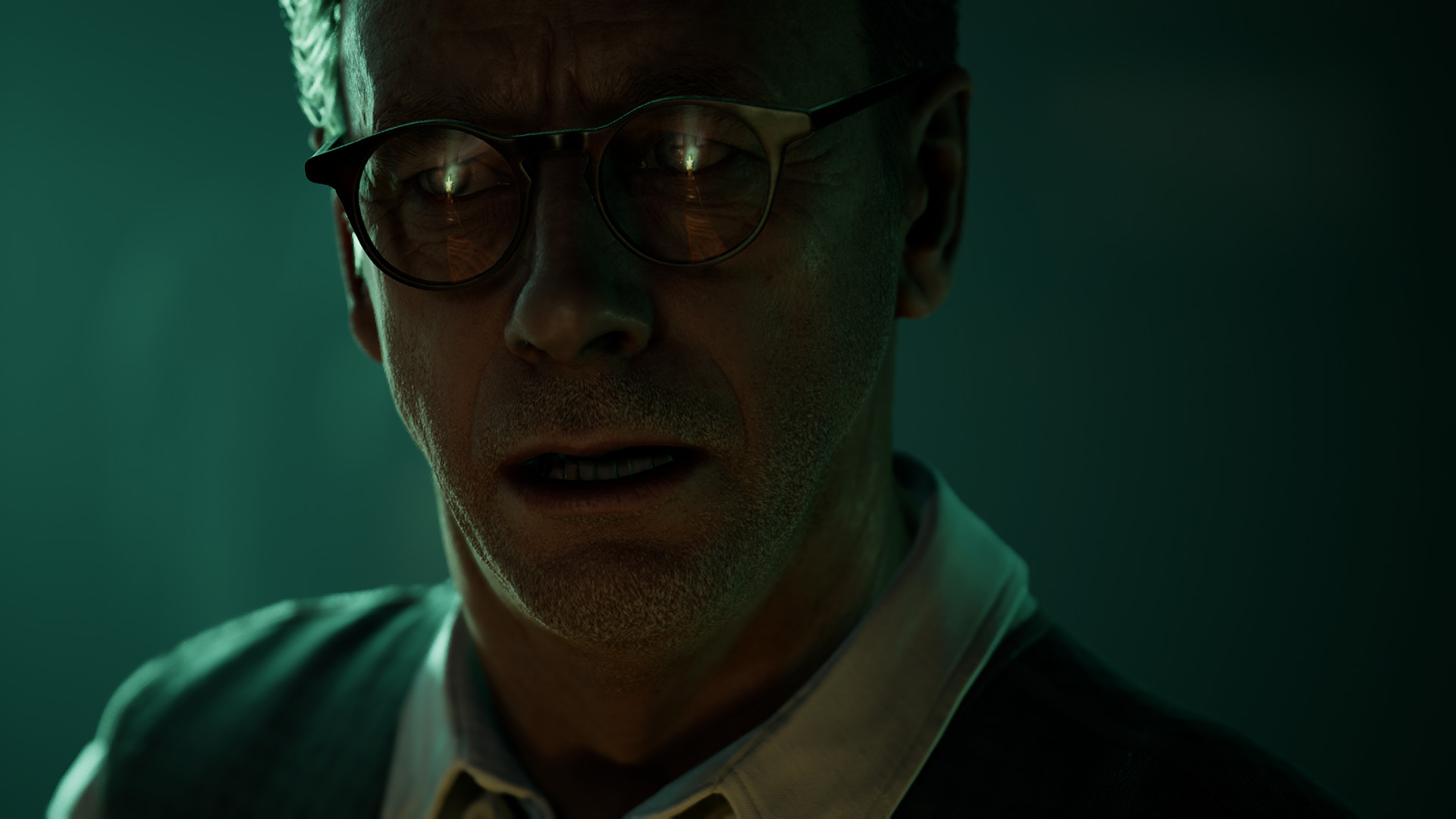The Devil in Me could be the best of The Dark Pictures Anthology yet
With The Devil in Me, it seems Supermassive Games is learning from each Dark Pictures installment

When The Dark Pictures Anthology gets it right, its ability to make the mundane seem interesting is unmatched. In The Devil in Me, the season finale to Supermassive Games' anthology series that's due next month, that's never been truer. Because more so than in any other genre, horror games that deal in tension and suspense need low points to accentuate their highs – but only by making those less thrilling moments intriguing can they hope to hold the attention of their players.
In The Quarry, Supermassive's last standalone release, a spiritual successor to 2015's Until Dawn, GamesRadar+ Senior Guides Coordinator Leon Hurley reckoned that its pacing was off, despite the game being fun overall. Having gone hands-on with The Devil in Me for just over an hour, though, pacing here feels like one of the game's strongest points.
Heating up


Building tension: can this golden age of horror remakes sustain itself?
My time with The Devil in Me starts a little into proceedings. I'm caught up with a brief recap of events to this point – a crew of young, ambitious filmmakers working under a middle-aged boss who's determined (but is yet) to find commercial acclaim have received a mysterious phone call inviting them to a replica of 'Murder Castle', the hotel once owned by American serial killer H.H. Holmes. Spending the night in a building with a well-documented criminal past, and shooting a documentary about the experience is a pretty firm basis for horror, but, like previous Dark Pictures Anthology entries, much of the game's tension builds through dialogue that uncovers the differences and sticking points among its playable protagonists.
Mark and Katie, for example, appear to have a romantic past that has implications for their working relationship. Erin is an overworked sound engineer intern who's frustrated by the fact she's treated as her boss Charlie's personal assistant. And, early on, we learn that Charlie himself has hidden the fact that his company, Lonnit Entertainment, is in serious financial trouble from the rest of the group. As we've come to expect from these 'interactive dramas', how these relationships unfold is often steered by the player – we're regularly allowed to choose how one character replies to another, the tone of said replies, and, as things eventually start to heat up, who one character might choose to let live or die in particularly gruesome situations.
Even during my short time spent with The Devil in Me, one of those situations popped up in typically ghastly fashion – but I was just as taken by first discovering the hotel's creepy animatronic bar man; by watching Charlie fret when his cigarette packet got jammed in the machine; when Charlie caught Mark and Katie bitching about him, as they thought he was out of earshot; and when Mark evoked his inner parkour athlete to retrieve a balcony key in order to get some decent establishing shots for their film. These small insights into each character's persona help grow tension, but the latter set-piece also served to show off some of The Devil in Me's new mechanics.
Playable characters can now run, jump, squeeze through tight spaces, and vault over obstacles, which in this instance saw Mark moving shelves in a library to create a makeshift bridge between crumbling catwalks, in a physical puzzle that was way more Resident Evil than The Dark Pictures Anthology. Other similar conundrums I came across during my playthrough included hacking a keypad to access a locked room, and rewiring a fuse box to restore power after a black out.
Tooled up

"By the time that first inevitable murder occurred, I was ready for it, but, more importantly, I was fully-invested in this gang's tale".
An inventory system also means players can carry and use items to help them overcome certain quandaries, giving The Devil in Me more of an adventure game feel over its forerunners. I had Charlie cracking a locked antique cash register with a business card at one point, for example, while later on I got to help Erin track down the source of creepy noises down one The Shining-esque hotel corridor using her directional microphone.
Sign up to the GamesRadar+ Newsletter
Weekly digests, tales from the communities you love, and more
By the time that first inevitable murder occurred, I was ready for it, but, more importantly, I was fully-invested in this gang's tale. Don't get me wrong, one of the main reasons the horror genre is so appealing to so many people is the fact death is ever-present. This couldn't be truer of Supermassive's games, but my lasting impression of a short time spent with The Devil in Me isn't pondering how I'll save these characters from a roving serial killer, it's how I'll eventually work the story in certain characters' favors, because I just can't imagine willingly leading them to their deaths. To me, that's credit to the choice-heavy rules Supermassive has established in its games, and the real-world performances of the actors as they appear in-game.
Given the sheer volume of narrative options, and the degree of choice these games offer, spending just over an hour with one isn't nearly enough time to form concrete opinions. That said, this is the most I've been taken by any of The Dark Pictures Anthology installments so far, and I've clearly barely scratched the surface of The Devil in Me. With the full anthology set to cover eight games, The Devil in Me marks its halfway point and the so-called finale of its first season. And if I can be so taken with its low-key minutiae, then I'm certain I'll enjoy its full descent into splatter film horror when it lands in full.
The Dark Pictures: The Devil in Me is due on November 18, 2022 for PS5, Xbox Series X and S, PC, PS4, and Xbox One.
Scare yourself silly with the best horror games right now.

Joe Donnelly is a sports editor from Glasgow and former features editor at GamesRadar+. A mental health advocate, Joe has written about video games and mental health for The Guardian, New Statesman, VICE, PC Gamer and many more, and believes the interactive nature of video games makes them uniquely placed to educate and inform. His book Checkpoint considers the complex intersections of video games and mental health, and was shortlisted for Scotland's National Book of the Year for non-fiction in 2021. As familiar with the streets of Los Santos as he is the west of Scotland, Joe can often be found living his best and worst lives in GTA Online and its PC role-playing scene.


